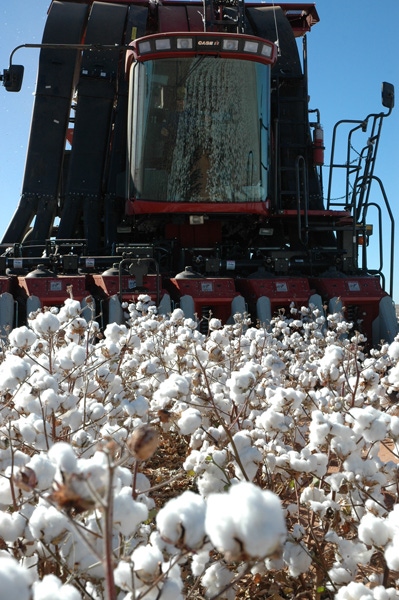October 19, 2010

Much of the state remained dry, some areas critically so. But what's bad news for some crops is excellent news for the cotton harvest, particularly in the High Plains, according to Texas AgriLife Extension Service reports.
"Overall, it's one of those years where we can probably look back down the road and just be amazed at what happened in 2010," said Randy Boman, AgriLife Extension cotton agronomist based in Lubbock. "We had such a great amount of rain; we had good production -- probably record production -- in the state, coupled with high prices."
Everything just fell into place during much of the growing season this year, including rain and warmer weather at the right time, he said.
There are about 5.4 million acres of cotton expected to be harvested in the state this year, with about 3.6 million acres in the Texas High Plains, Boman said. This indicates a total yield for the state of 8.8 million bales, with about 6.1 million estimated for the High Plains.
Color grade, leaf grade, micronaire values and fiber strength -- all are very good to excellent, Boman said.
If there's any downside imaginable, it would be from growers either participating in a marketing pool or previously contracting their cotton and not being able to take advantage of the $1 or better per pound prices, he said.
However, with the excellent quality and expected high yields, Boman said cotton growers still have little to complain about. Average contracted prices still promise a good profit for growers.
"It was my understanding that about two-thirds of the crop contracted two or three weeks ago," he said. "I was hearing in the neighborhood of 75 cents a pound, but that's just what I've been hearing."
As of Oct. 19, Boman said about 300,000 bales of Texas High Plains cotton had been classed, a number that represents only about 5 percent of the projected crop.
"It is going take a while to get a 6-million-bale crop harvested in the High Plains. There's no doubt about that."
You May Also Like




